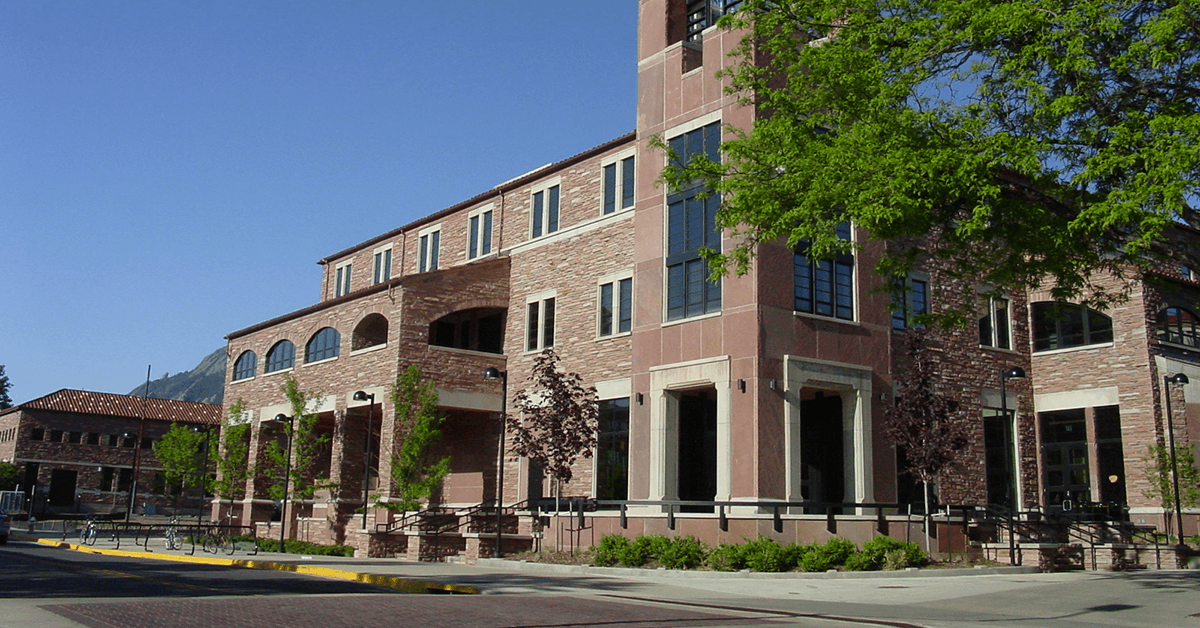 University of Colorado, Boulder
University of Colorado, BoulderStudents Designed Colorado SPARC Home
Net-zero homes are built to conserve energy, some even go so far as to produce additional energy for the surrounding communities. A net-zero award winning home in Fraser, Colorado is the result of the hard work and innovation of two University of Colorado (CU) Boulder engineering students, Gabi Abello and Hannah Blake. The pair, and a team of CU students, designed a home that offers solutions to three of the area’s most pressing housing issues: sustainability, attainable housing, and regional construction challenges.
When the CU students entered the U.S. Department of Energy Solar Decathlon, they were up against the usual challenges of the competition and some challenges unique to the frigid mountain town where they planned to build the home. Their solutions to these cold weather, high altitude obstacles may have been the very factors that secured the team the first-place prize.
The team’s house is known as the SPARC House. The acronym highlights the five pillars of the building project: sustainability, performance, attainability, resilience, and community. The team worked to maximize the home’s passive system by adding features like wool insulation so the active systems of the home wouldn’t need to work as hard.
The home also contains 7.6 kilowatt solar arrays which provide enough power to get the home to net-zero. Another important addition to the home aligning with the town of Fraser’s sustainability initiatives is the cold climate heat pumps. These pumps work like reverse air conditioners. They suck the heat out of the cold outdoor air and pump it indoors – an essential sustainability component for a home built in such a cold climate.
“It’s absolutely a big deal here because heating your home is the most expensive electrical cost up here,” Michael Brack, Fraser’s assistant town manager said. “Figuring out how you can solve that problem while keeping your utility bill under 240 bucks a month in the wintertime is a challenge and (CU) picked a great route with heat pumps and having those powered by solar.”
Keeping the cost of utilities low was just one part of the team’s secondary mission – create attainable housing options for first-time homebuyers and the mountain town’s workforce.
For years, affordable housing has been a problem in mountain towns throughout Colorado. Home prices have been on the rise throughout the country, but in resort heavy mountain communities this trend is especially true. COVID-19 exacerbated the problem as people moved to mountain towns from urban areas and set up long-term remote workstations in these vacation destinations.
When the workforce for tourist-centric locations can’t afford to live in the area, the entire town suffers. According to Dave Byrd, director of risk and regulatory affairs at National Ski Areas Association, “Without ample affordable housing, the entire community suffers – it impacts tax revenues significantly, businesses cannot fully operate, and impacts guest services across the board. Without affordable housing, all businesses will struggle to find workers.”
The solution developed by the students included a locked-off rental unit attached to the home. This addition not only allows the homeowner to offset the cost of their mortgage with rental income, but it also provides affordable living accommodations for seasonal workers.
To keep the cost of building low, the CU team chose prefabricated construction by partnering with Simple Homes in Denver. The prefab construction was not only affordable, but quick – an important factor to consider when you’re building a home in an area with an exceptionally short building season.
In addition to the short building season, construction challenges in these frigid mountain towns also include an unpredictable climate, difficult passages for the transportation of materials, and labor shortages.
The SPARC Home model was able to be built quicker because of the prefabricated construction and it requires less lumber than traditional builds which keeps costs low, construction efficient, and waste minimal. “Your average 2,000 square foot single-family house when built on-site generates about 5,000 pounds of waste during the framing process,” said Jeff Hopfenbeck, co-founder and CEO of Simple Homes.
The SPARC Home model is an exciting option for sustainable and attainable housing in Colorado’s popular mountain towns.
Time to Focus on Affordable Housing
Taxes on real estate are not the answer. Sign the petition calling on Congress to address our country’s housing shortage.





